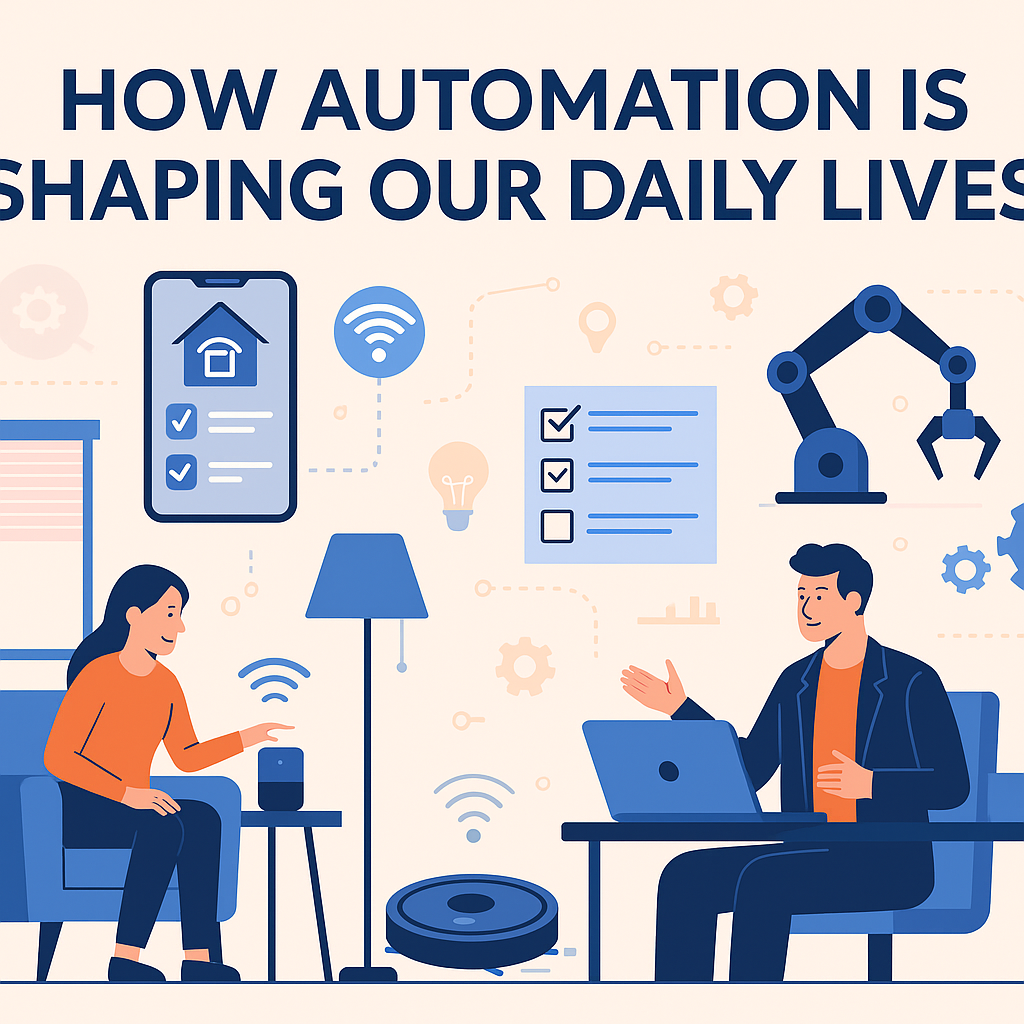In recent years, automation has evolved from a futuristic concept to a daily reality. From the way we brew our morning coffee to how we manage our tasks at work, automation is quietly revolutionizing every corner of our lives. Whether it’s a smart home assistant or an intelligent workflow tool at the office, automation is simplifying routines, increasing productivity, and changing how we interact with the world.
But what does this shift mean for us, and where is it taking us next? Let’s take a deep dive into how automation is reshaping life as we know it.
The Rise of Automation at Home
Ten years ago, the idea of controlling your home with your voice sounded like something out of science fiction. Today, it’s commonplace. Smart home devices like Google Nest, Amazon Alexa, and Apple HomeKit have transformed traditional living spaces into intelligent ecosystems.
Common Home Automation Examples:
- Smart thermostats adjust temperatures based on your habits.
- Voice-activated assistants control lighting, play music, and manage to-do lists.
- Automated vacuum cleaners keep floors spotless without lifting a finger.
- Security systems notify you of intrusions, package deliveries, and more, in real-time.
These tools do more than offer convenience — they provide energy efficiency, enhance safety, and save time.
Automation in Our Personal Routines
Beyond gadgets, automation’s plays a role in how we live and plan our days.
- Mobile banking apps send reminders to pay bills and automate savings.
- Health apps track sleep, nutrition, and fitness, offering real-time feedback.
- Online shopping platforms use algorithms to auto-suggest products and reorder essentials.
We’ve come to rely on these micro-automations to manage busy lives — often without realizing just how dependent we’ve become.
The Automated Workplace
While automation at home enhances convenience, in the workplace it’s all about efficiency, accuracy, and scalability.
Common Workplace Automations:
- Email filters and auto-responders streamline communication.
- Project management tools like Trello or Asana automate task tracking.
- CRM systems (e.g., Salesforce) automate customer interactions and follow-ups.
- AI-powered analytics forecast trends and generate reports in seconds.
In industries like manufacturing, robotic automation has been in place for decades. However, now white-collar jobs are experiencing their own automation revolution, thanks to tools that handle scheduling, documentation, and even basic decision-making.
Benefits of Automation in Daily Life
Here’s how automation is making life better, both personally and professionally:
- Saves Time – Repetitive tasks are handled automatically.
- Boosts Productivity – Workers focus more on creative and strategic tasks.
- Enhances Accuracy – Reduces the risk of human error.
- Improves Safety – Particularly in industrial environments and home security.
- Provides Insights – Data-driven automation tools help us make smarter decisions.
Are There Downsides?
Like all technological shifts, automation comes with challenges:
- Job displacement is a real concern in certain industries.
- Privacy risks exist with always-on smart devices.
- Overdependence on automation may reduce critical thinking in daily activities.
The key is to strike a balance — leveraging automation’s for what it does best while still maintaining human control and judgment.
The Future: Where Is Automation’s Headed?
The future promises even deeper integration of automation in our lives.
- AI assistants will become more intuitive and proactive.
- Smart cities will automate traffic, public services, and infrastructure.
- Healthcare will see increased use of robotic surgery, diagnostics, and personalized treatment planning.
- Workplaces may integrate virtual assistants that can manage entire departments or projects autonomously.
As automation’s evolves, our focus will likely shift from doing tasks to managing systems that do the tasks for us.
Final Thoughts
Automation isn’t just a trend — it’s a transformation. From waking up to a perfectly brewed cup of coffee to collaborating with digital tools at work, it’s hard to imagine life without it. While it brings challenges, the benefits of automation — in time saved, stress reduced, and tasks optimized — are undeniable.
Embracing automation’s means understanding how to make it work for you, whether you’re streamlining your morning routine or optimizing business operations.



